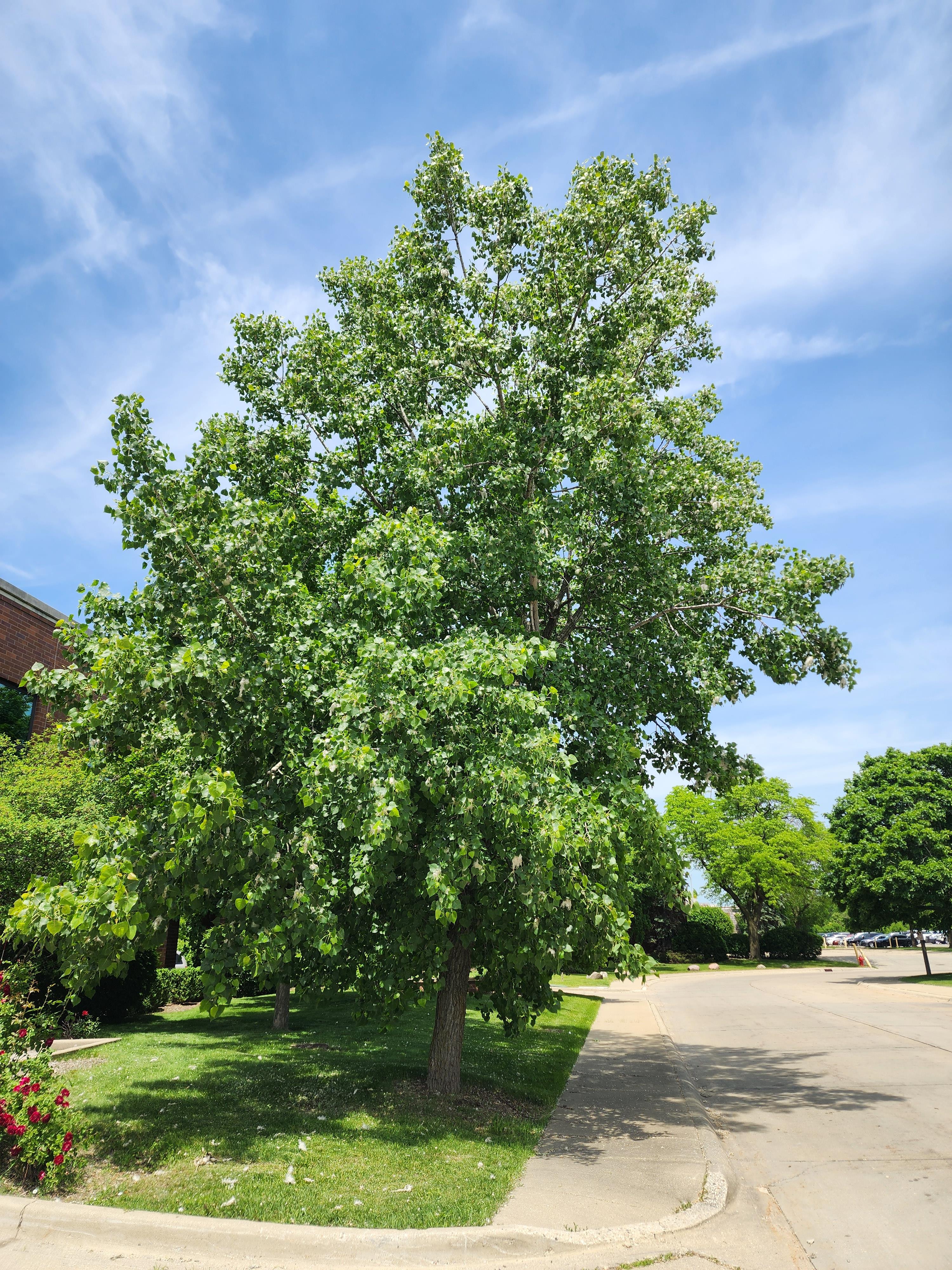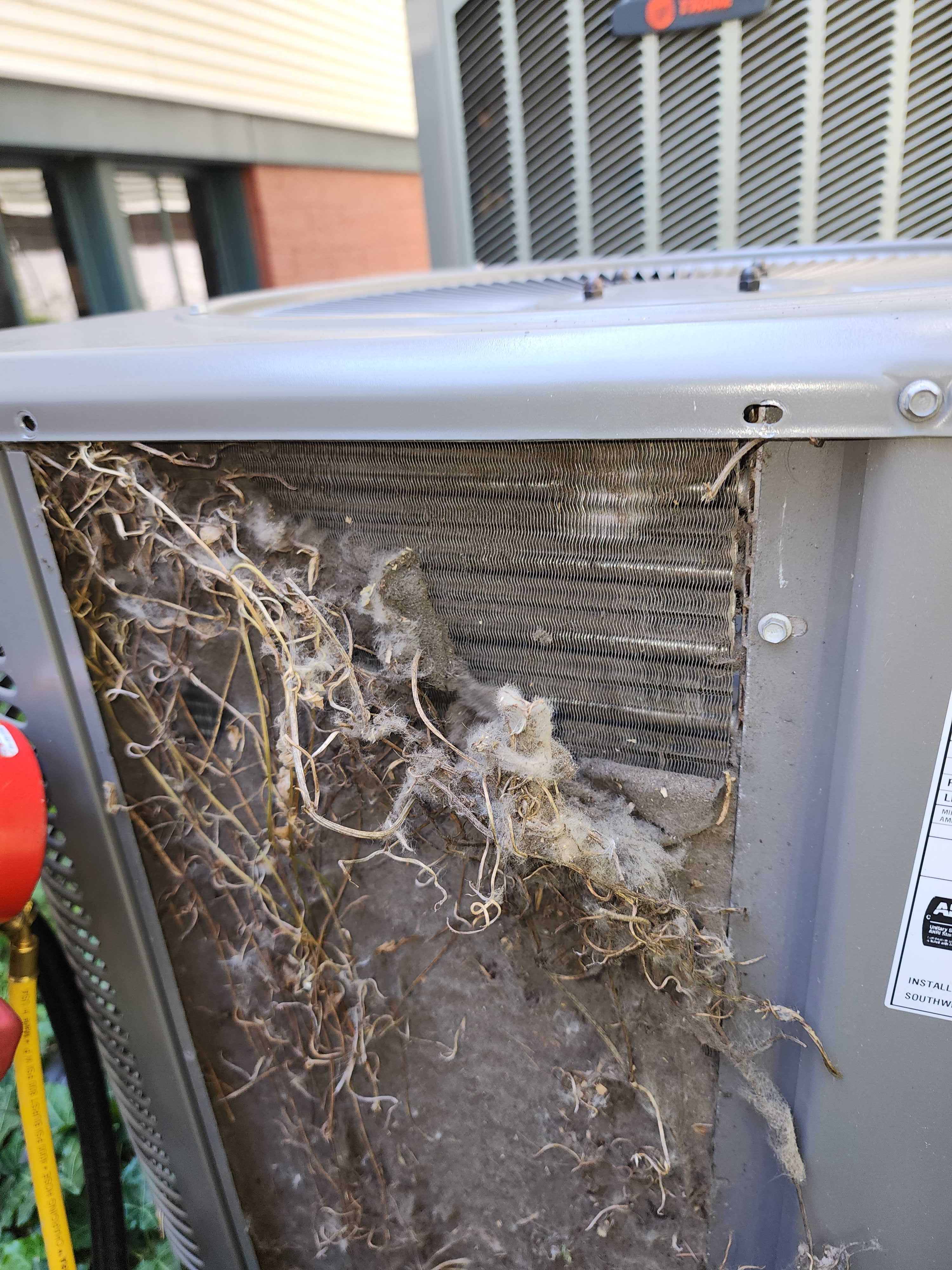Cottonwood in history: Few sights were more welcome to America’s early pioneers than the cottonwood tree. As they pushed westward with their wagons, these brave men and women found food for their livestock in the tree's leaves, as well as shade for themselves and timber for their dwellings. The beauty of the cottonwood leaves as they turn in the wind may also have revived memories of eastern forests and sustained many a flagging spirit. On the more practical side, cottonwood trunks provided dugout canoes, and the tree’s bark was used to produce both forage for horses and a bitter medicinal tea. And in regions with few trees, the very noticeable cottonwoods often served as gathering places, trail markers, and as sacred objects for several Plains tribes. Today, cottonwood trees are commonly used in making plywood, matches, crates, boxes, and paper pulp.
From an air conditioning techs' prospective: Cottonwood trees produce the worst seeds on the planet! Cottonwood seeds look like snow in May & June causing the worst matting on an outside air conditioner condenser coil. An air conditioner that is unattended will make a sweater of matted seeds/cotton around itself. This sweater makes the air conditioner run hotter than it should, which in turn makes the unit less efficient by increasing its run time which then increases operational cost and higher utility bills. But wait, there's more, hotter internal operational temps affect the motor windings lacquer (which is there to prevent motors from shorting out or going bad). Another part that can wear out faster is the capacitor which helps create motor rotation and operation. If a capacitor gets overheated, it will expand and then stop working, resulting in your condenser fan motor and compressor to stop running, resulting in a breakdown. There is a contactor (layman’s term “light switch”) in the air conditioner that will start to see higher cycle rates which causes the switch to be engaged more often than it should due to your home not cooling properly. High temperatures inside a sealed compressor effects the oil in the refrigerant that is designed to keep everything moving at an extremely high rate of speed. Once this occurs the lubricant cannot properly flow which causes the compressor to short circuit, and in-turn leads to high priced repairs. Once heat increases, pressures in the system will also increase. This increase can cause additional long-term stress on the whole piping system, but specifically the evaporator coil.
Part failures that can be caused by Cottonwood:
- Dual Capacitor
- Contactor
- Compressor
- Condenser Fan Motor
- Leaks in the system from higher-than-normal system pressure
Longer run times or increased cycles of operation can wear out your furnace/air handler, the driving force of air circulation in your home.
Homeowner tips: With the thermostat in the off position, use your garden hose to wash down the unit several times during the cooling season. Be careful not to have the water stream too strong, because this can damage the fins on the unit.
Call American Weathermakers today to schedule your AC or heat pump maintenance. Maintaining your equipment regularly can save possible costly repairs and will help your air conditioner to last to its full potential.
PUBLIC ENEMY # 1

This is what Cottonwood does!


